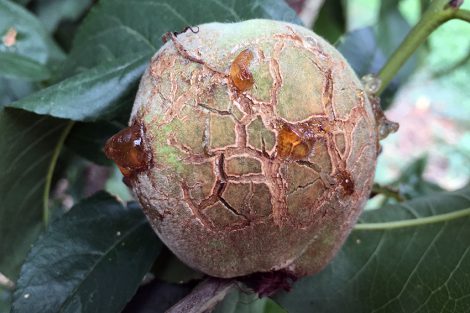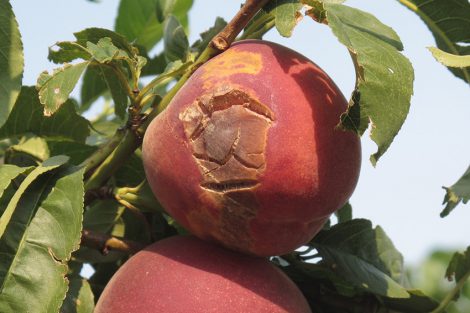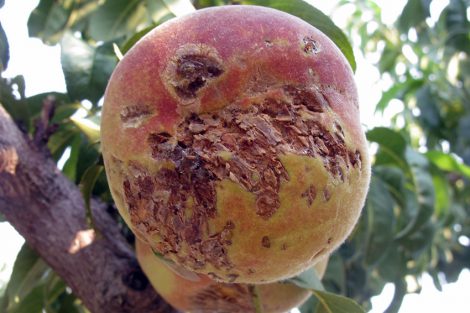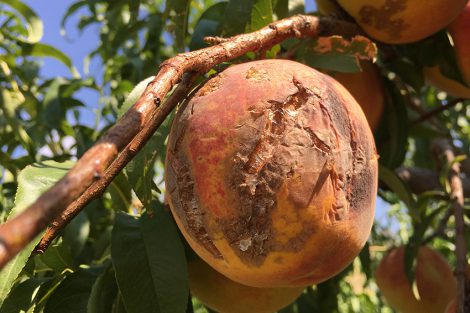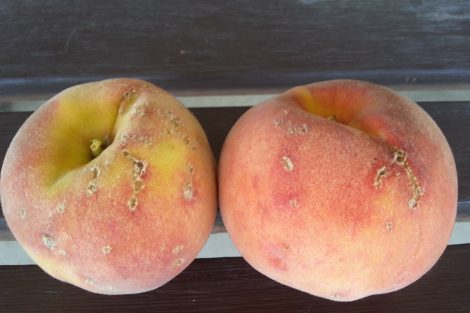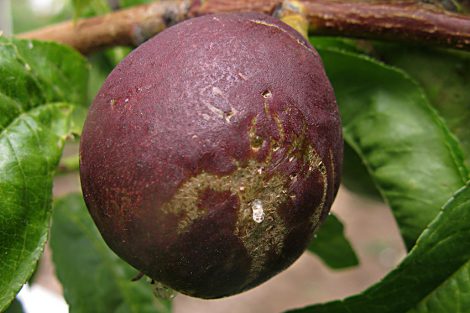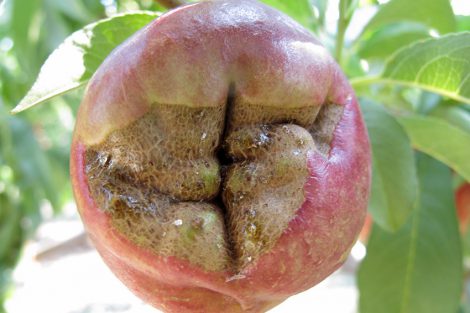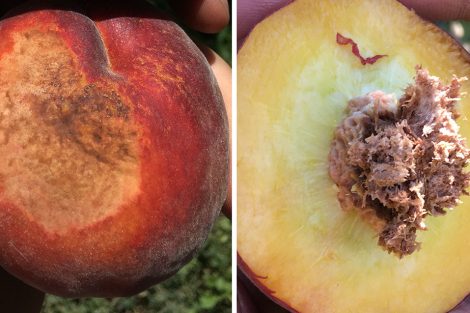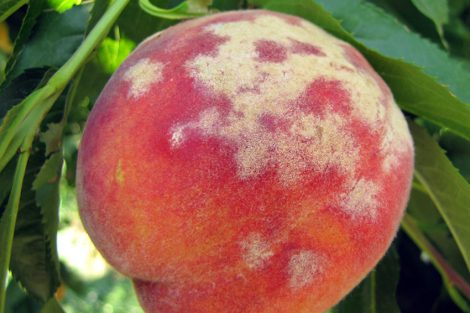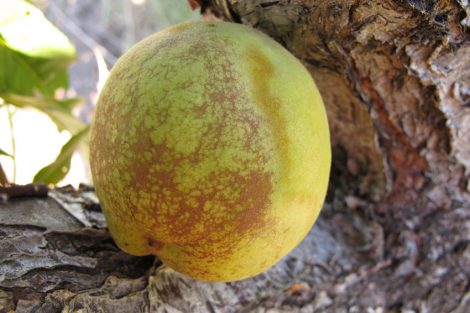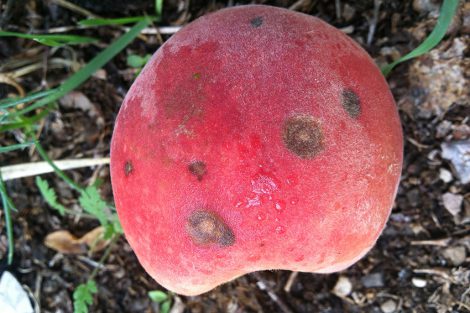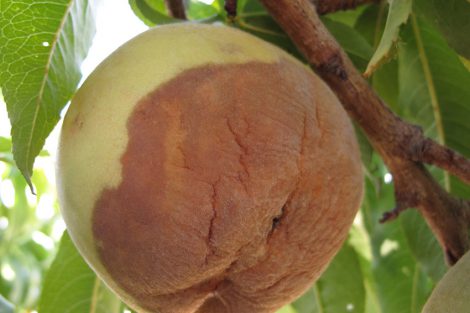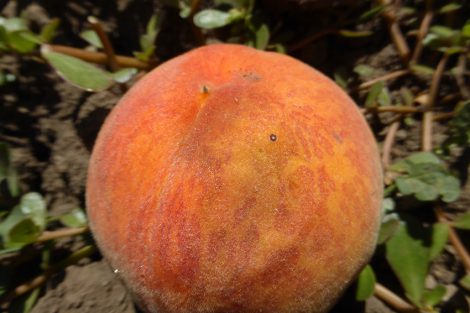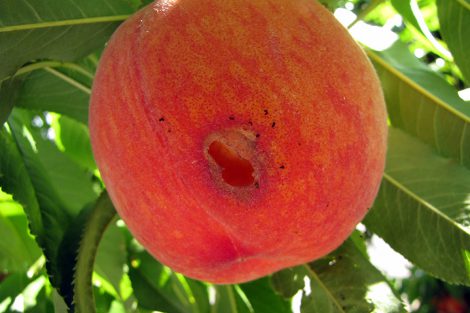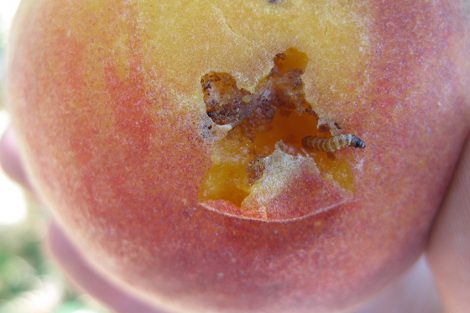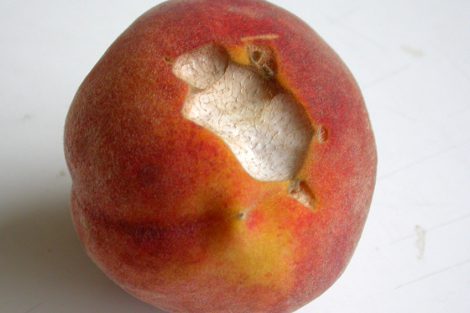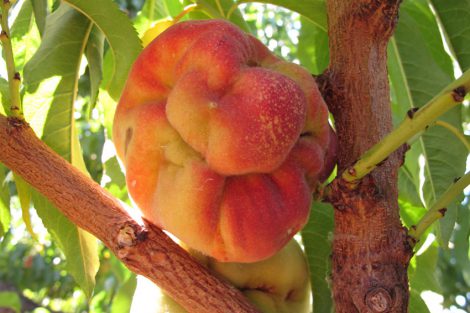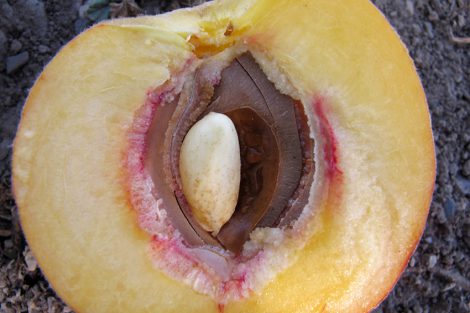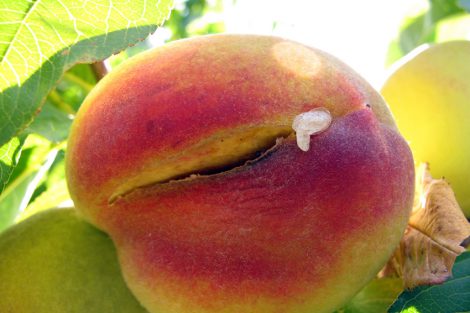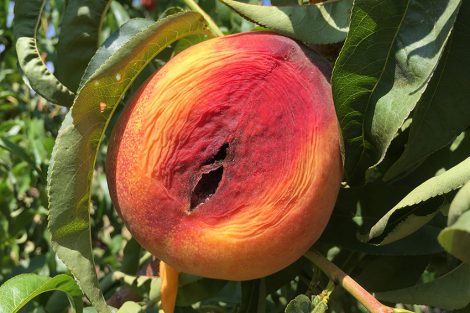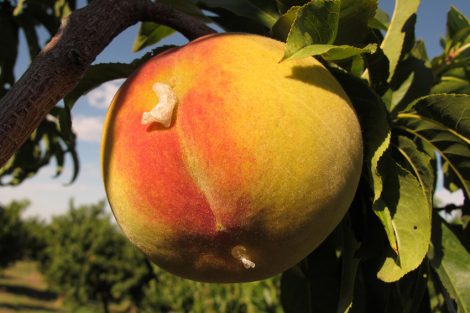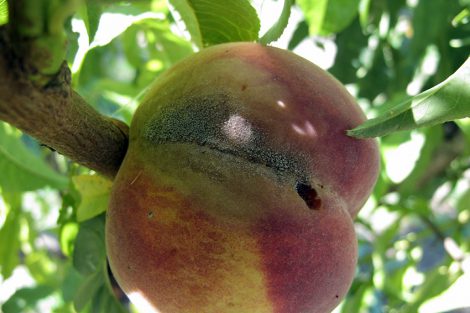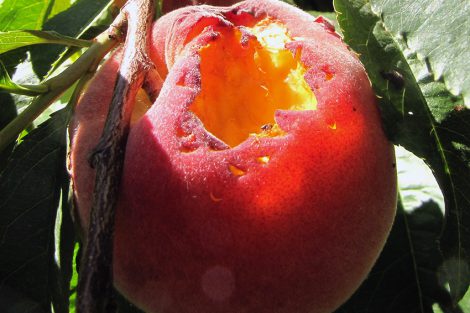In this Issue/What to Watch For
- Codling moth: continue protection until Sept. 15
- White apple leafhopper: nymphs and adults are active
- Greater peachtree borer (backyard growers): continue protecting lower trunk through end of September
- Coryneum blight and Brown Rot (commercial growers): avoid late-season infections
- Peach issues at harvest
APPLE, PEAR INFORMATION
Codling Moth
Keep fruit protected up until September 15. Around that time, codling moths respond to the shorter day length by converting their resources to overwinter survival.
White Apple Leafhopper
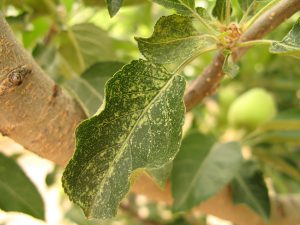
Where present, feeding damage from the second generation of leafhopper nymphs is visible on the foliage. A mix of nymphs and adults are active on the undersides of leaves. If your trees had a high population of the first generation, keep in mind that leafhopper adults can be a nuisance while picking. If needed, treat now if you have not already treated.
Note that feeding on the foliage will not affect apple yield or tree health.
Treatment
- Backyard growers can use 1% oil, insecticidal soap, Safer BioNeem. Be sure to thoroughly cover the undersides of the leaves.
- Options for commercial growers: click here.
PEACH/NECTARINE INFORMATION
Greater Peachtree Borer (For Backyard Growers)
Continue to maintain protection of the lower trunk of peach/nectarine and apricot (where necessary) with your last treatment around September 15 (so that the trunk is protected through Oct 15). When you spray, be sure to move mulch or weeds away from the trunk (or even excess soil).
Treatment
- Backyard growers can use Hi Yield Permethrin, Sevin, Spectracide Triazicide, or for organic control, products containing spinosad.
Coryneum Blight and Brown Rot (For Commercial Growers)
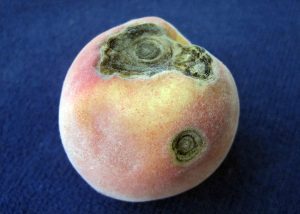
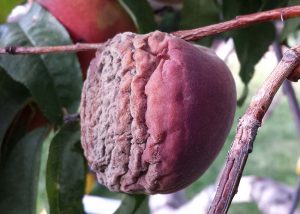
Coryneum infections that happen as fruit is ripening are more severe than early-season infections. Sometimes, the damage will not show up until after harvest.
Brown rot is a disease that has occurred sporadically in some parts of northern Utah, on very late varieties during times of heavy, wind-blown rain.
Thankfully, the peach-harvest weather has been dry so far, and there is little chance of rain in the next ten days. However, northern Utah can typically expect to see some monsoonal rains late in the peach growing season.
Protection against late season infections on ripening fruit is particularly important where there is a history of these diseases. During the three to four weeks before harvest, be diligent about monitoring your fruit, and apply a protection before a forecasted rainfall. Some products do have curative effects, and will work after a rainfall.
For coryneum blight, at least 4 hours of warm-weather rainfall is needed to cause infections. For brown rot, the fungal spores require a wound on the fruit to enter, which may be caused by strong wind+rain events. For both diseases, new infections are visible on maturing fruit in a matter of 2 to 5 days, and most often, render the fruit unmarketable. Additional infections can spread rapidly within an orchard or individual tree.
Treatment
| Fungicide | Group | PHI | Also Controls | Efficacy | Resistance Risk |
|---|---|---|---|---|---|
| Topsin M (thiphanate-methyl) | 1 | 1 | powdery mildew | excellent | High |
| Indar (fenbuconazole) | 3 | 0 | powdery mildew | excellent | High |
| Rally (myclobutanil) | 3 | 0 | powdery mildew | good | High |
| Spectracide Immunox (myclobutanil) (Home use) | 3 | 0 | powdery mildew | good | High |
| Fontelis (penthiopyrad) | 7 | 0 | powdery mildew | good | High |
| Vangard (cyprodinil) | 9 | 2 | good | High | |
| Gem (trifloxystrobin) | 11 | 1 | powdery mildew | good | High |
| Quilt Xcel (propiconazole + azoxystrobin) | 3/11 | 0 | powdery mildew | excellent | Medium |
| Pristine (boscalid + pyraclostrobin) | 7/11 | 0 | powdery mildew | excellent | Medium |
| Captan (captan) (Home use) | M4 | 0 | fair | Low |
Peach Problems Seen at Harvest
Peach harvest is on, and we’ve seen a variety of fruit damage, ranging from wind injury, powdery mildew, coryneum blight, earwigs, birds, and more. Check out the photo gallery to identify what you may be seeing during harvest.

